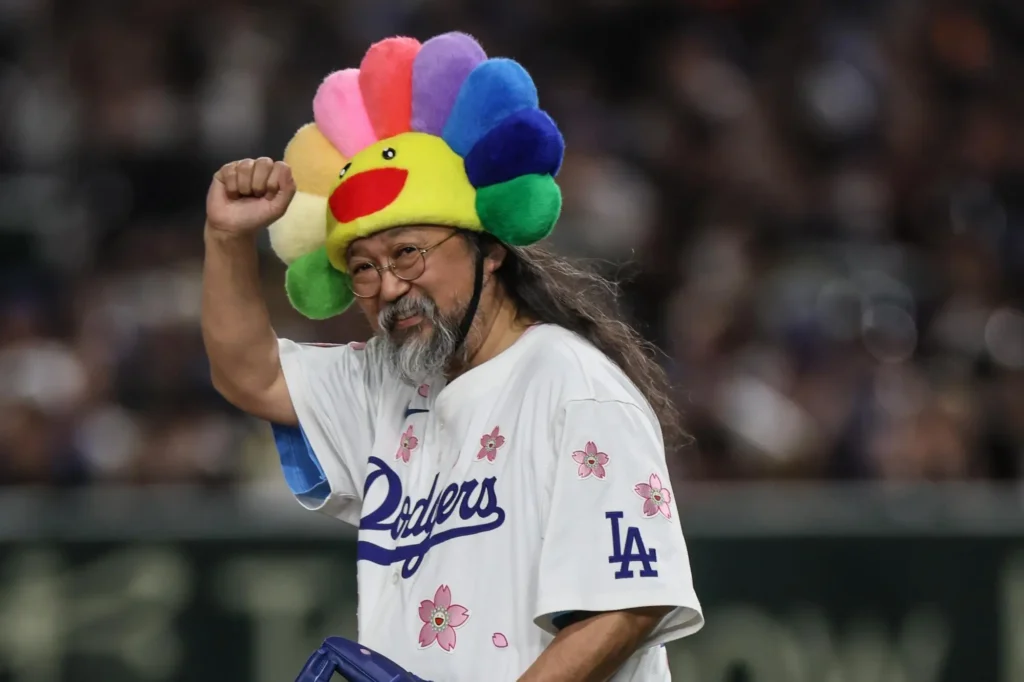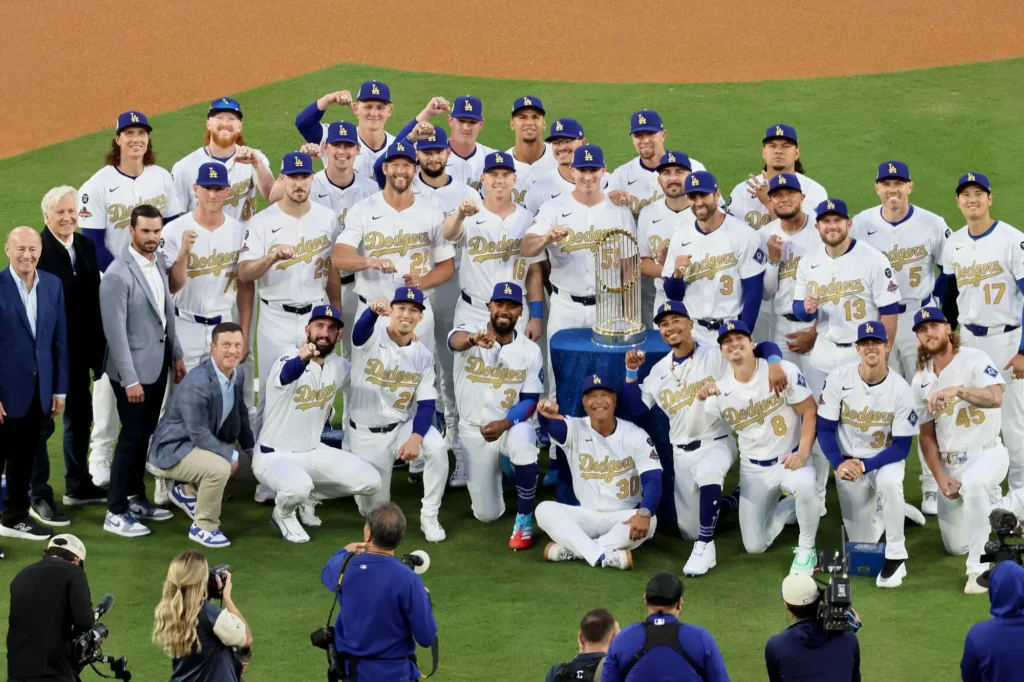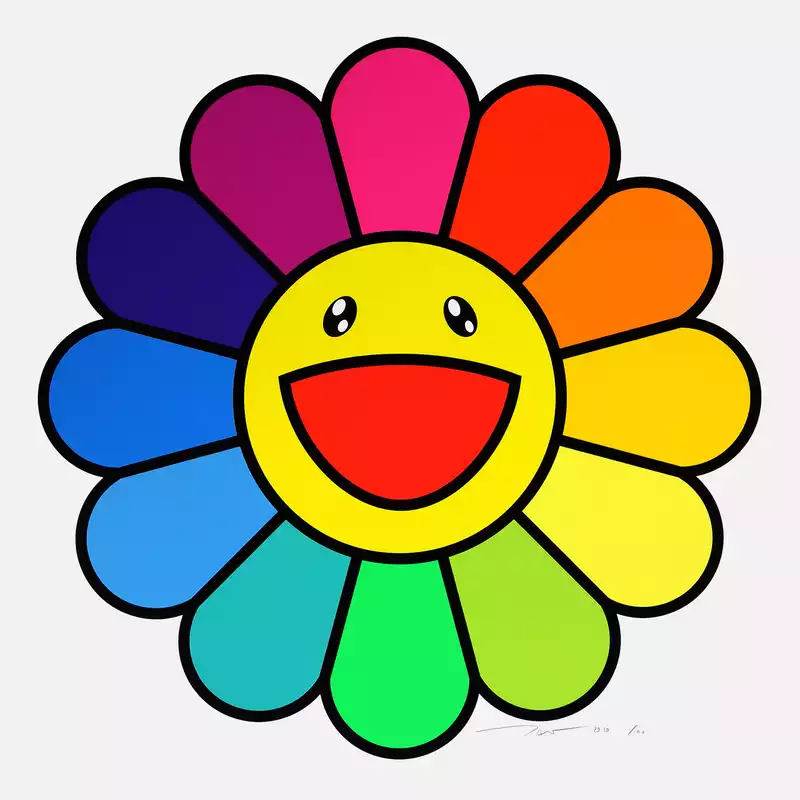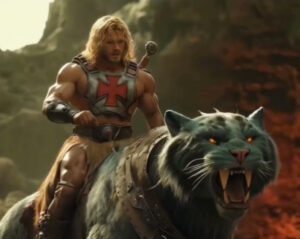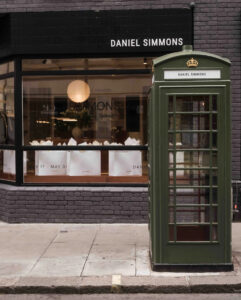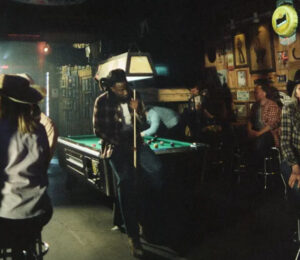In 2025, the Los Angeles Dodgers claimed their second consecutive World Series title, etching their name deeper into baseball history. Yet this time, the celebration transcended the diamond. It spilled into the city’s creative bloodstream, where art, fashion, and street culture intersect. At the center of this convergence stood Takashi Murakami—Japan’s most globally recognized contemporary artist—who transformed the team’s triumph into a cross-disciplinary cultural artifact.
visual
The Dodgers’ win was more than another championship; it was a declaration of continuity, the assurance of legacy in an era where both sports and art are mediated through culture. Murakami, known for his Superflat philosophy and kaleidoscopic flowers, reimagined the Dodgers’ iconography in a way that celebrated both the team’s identity and the city’s hybrid soul.
The collaboration’s essence is found in the details. Murakami’s multicolored flower motifs orbit the Dodgers’ classic script, harmonizing joy with triumph. The artist integrated Japanese Katakana lettering spelling “DODGERS,” symbolizing a bridge between Tokyo and Los Angeles, two cities that share a devotion to spectacle, innovation, and identity.
For Murakami, who confessed to shouting and crying during Game 7, this wasn’t a distant commission. It was emotional participation. His approach fused the euphoria of fandom with the meticulous language of art, reframing what “team pride” can look like in 2025.
View this post on Instagram
design
The limited-edition Dodgers × Murakami collection, launched globally in November 2025, stands as one of the most ambitious fusions of sport and art in recent years. It included championship hoodies, T-shirts, and collectibles, each blending Murakami’s flower universe with the Dodgers’ heritage.
Beyond its visual appeal, the drop symbolized a cultural strategy. By collaborating with Murakami, the Dodgers transformed their merchandise into something collectible, turning victory into wearable memory. Each piece wasn’t simply a fan souvenir—it was a design object that carried the emotion of the win and the aesthetic of Murakami’s studio.
The drop followed the format of luxury streetwear releases: global timed launches, limited quantities, and simultaneous online availability through MLB Shop, Fanatics, and Complex. This precision mirrored the Dodgers’ own discipline—a team that has mastered both performance and presentation.
why
For decades, championship merchandise has followed a predictable formula: logo, date, celebration. Murakami disrupted that rhythm. His reinterpretation positioned the Dodgers’ identity as art, infusing joy, color, and universality into an emblem of competition.
In doing so, the project expanded the meaning of fandom. Owning a Murakami × Dodgers piece meant participating in both a cultural and emotional narrative—an acknowledgment that sport in 2025 isn’t confined to the scoreboard. It lives in fashion, in art, in how people express affiliation and memory.
Murakami’s touch created a bridge between distinct audiences: baseball loyalists, art collectors, and fashion consumers. The Dodgers gained global reach and aesthetic relevance, while Murakami gained a new cultural medium—an American championship worn on the streets of Shibuya, Seoul, and Silver Lake.
symbol
Murakami’s flowers are not ornamental. They are symbols of hope, repetition, and resilience—perfect metaphors for a championship team. Their smiling faces contrast the intensity of the game, softening competition with humanity.
When layered with the Dodgers’ blue palette and the familiar cursive emblem, the flowers suggest a dual energy: precision and playfulness, discipline and joy. The composition reframes the Dodgers not just as athletes, but as icons of visual and cultural optimism.
The inclusion of Japanese text does more than celebrate Murakami’s roots. It globalizes the Dodgers’ brand. Baseball, long America’s pastime, finds a visual passport in Murakami’s translation—a subtle nod to the sport’s international language and the expanding trans-Pacific fan base.
flow
This connection represents a new business model where victory becomes an aesthetic asset. The Dodgers’ championship served as a trigger for design, collaboration, and commerce. It exemplifies how sports organizations now operate as hybrid brands, balancing athletic excellence with cultural relevance.
For the Dodgers, this wasn’t about novelty. It was about legacy building. The partnership positions them alongside global teams that understand the importance of culture as soft power. By embedding art into sport, the Dodgers ensured that their victory would live beyond highlights and statistics.
Murakami’s participation, meanwhile, speaks to the evolution of contemporary art. He continues to blur the boundaries between high and low, museum and merch, elite and accessible. In aligning with a sports franchise, Murakami amplifies his mission to democratize art—making it wearable, collectible, and immediate.
the fwd
The Dodgers’ parade through downtown L.A. mirrored the mood of the collab—joy, stylish, and grounded in unity. Fans wore Murakami’s designs alongside vintage jerseys and modern streetwear, turning the city into a moving exhibition.
For the team, this championship felt different. It wasn’t just a sporting achievement; it was a celebration of culture, identity, and the creative pulse of Los Angeles. The Dodgers have long been synonymous with L.A. pride, but with Murakami’s involvement, they became ambassadors of artistic evolution.
leg
Murakami closed his public message about the collaboration with a challenge: “Two is great—but three is greater. Let’s make that happen in 2026.” The statement, equal parts humor and ambition, encapsulates the spirit of both art and sport—a shared pursuit of what’s next.
As the Dodgers aim for a three-peat, their partnership with Murakami sets a precedent for how victories can be narrated in culture. The collection proved that a championship doesn’t end at the final pitch; it extends into design, symbolism, and memory.
close
What Murakami and the Dodgers achieved together is more than branding. It is storytelling through medium and motion—athletic achievement transformed into aesthetic permanence. Their collaboration celebrates the essence of Los Angeles: a city that thrives on reinvention, collaboration, and spectacle.
In Murakami’s world, flowers never stop smiling. In Los Angeles, the Dodgers never stop believing. Together, they’ve created a shared vision of endurance and imagination—a portrait of victory painted not on canvas, but on culture itself.
No comments yet.

